In April, Cherryland General Manager Tony Anderson, incoming CEO Rachel Johnson, and Board Director Gabe Schneider attended the National Rural Electric Cooperative Association Legislative Conference in Washington, D.C., along with more than 2,000 others representing electric cooperatives across the country. They discussed key legislative topics impacting electric cooperatives and met with local lawmakers to share priorities regarding reliability, affordability, and the future of the electric grid. Here are some of the key topics they discussed:
- The Farm Bill, last reauthorized in 2018, is essential to electric cooperatives because it provides the means that help co-ops perform three important functions: securing financing for basic electrification in rural America, facilitating innovation in energy and broadband technology and deployment, and supporting co-ops’ role as important economic development partners in the communities we serve.
This year, Congress will authorize a new farm bill. The rural development funding in the Farm Bill accounts for less than half of one percent of the total farm bill, but is vital to electric cooperatives and the communities they serve. Our national trade organization, NRECA, is urging Congress to maintain and enhance those critical tools.
- Reliability remains a priority for the energy industry. There are five main issues impacting reliability and affordability that cooperative representatives worked to make lawmakers aware of:
-
- Electrifying the Economy: The country is trending toward an increasingly electrified future. The Electric Power Research Institute says achieving net zero emissions by 2050, economy-wide, would require electric generation capacity to increase by as much as 480%.
- Early Retirement of Existing Generation: As reliable, 24/7 generation assets are retired earlier than expected, new sources of generation are more intermittent and not being built fast enough to replace what’s been taken offline.
- Permitting Challenges: The current permitting process to build new generation and transmission assets can take up to 10 years due to regulatory hurdles. This compounds the problem we’re seeing with replacing prematurely retired generation assets and increasing electric generation capacity.
- Supply Chain: The energy industry is experiencing an unprecedented shortage of basic grid components to maintain a reliable electric grid.
- Natural Gas Availability: As the grid becomes increasingly reliant on intermittent generation sources like wind and solar, the U.S. is also increasingly reliant on natural gas generation to fill the gaps. Extreme weather events, like the extreme cold in December 2022, resulted in severe natural gas shortages and rolling blackouts for parts of the east coast.



” The Electric Power Research Institute says achieving net zero emissions by 2050, economy-wide, would require electric generation capacity to increase by as much as 480%”
Well, they say that generation would have to increase on the low end by a factor of 1.6, and on the high end by a factor of 4.8. That’s a range of increase of 60% to 380%. EPRI was clear on this, but many news stories get the amount of increase wrong.
And…it’s probably better to report the range of estimates from EPRI, not the high end.
Hope that’s helpful,